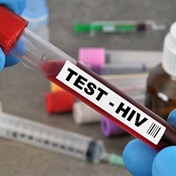An international team of researchers has found that certain bioactive components found in human milk are associated with a reduced risk of HIV transmission from an HIV infected mother to her breast-fed infant. Their study will be published in the American Journal of Clinical Nutrition.
"In developing countries, HIV-infected mothers are faced with the decision of whether or not to breastfeed their babies," said Lars Bode, PhD, assistant professor in the Department of Pediatrics at the University of California, San Diego School of Medicine. "Breastfeeding exposes the baby to the virus and increases the risk of the baby dying from HIV infection; but not breastfeeding increases the risk for the baby to die from other intestinal or respiratory infections."
How the study was done
Bode and colleagues set out to find why the vast majority of breast-fed infants do not acquire HIV-1, despite continuous exposure to the virus in their mother's milk over many months. Even in the absences of antiretroviral drugs, only 10 to 15% of infants will acquire HIV infection from their HIV-infected mothers.
They discovered that immunologically active components called human milk oligosaccharides (HMO) – a type of carbohydrate made up of several simple sugars linked together – may protect from HIV transmission. These complex oligosaccharides are the third-most abundant component of breast milk, yet are not digestible and therefore become highly concentrated in the mucosal surfaces of the infant's gastrointestinal tract.
"HMO act as prebiotics that promote the growth of desirable bacterial communities in the infant's intestine," said Bode. Additionally, HMO structurally resembles sugar chains called glycans that are normally found on epithelial cell surfaces, and can serve as "decoy" receptors to inhibit pathogens from binding. Last, HMO exhibit anti-inflammatory activity and have been shown to modulate immune cell responses in cell and animal models.
The researchers analysed HMO amount and composition in breast milk samples collected from more than 200 women as part of a larger study of HIV-infected women and their infants in Lusaka, Zambia, following them from birth to 24 months. (Most were recruited to the study and followed before antiretroviral therapy became available to them, thus offering a unique look at associations between HMO and HIV transmission.)
Higher concentrations of HMO in milk were associated with protection against postnatal HIV transmission, independent of other known risk factors. In the future, a better understanding of how individual HMO facilitate or obstruct HIV transmission may guide the development of interventions to complement antiretroviral strategies and more effectively prevent transmission, according to the researchers.
(EurekAlert, August 2012)
Read more:




 Publications
Publications
 Partners
Partners














